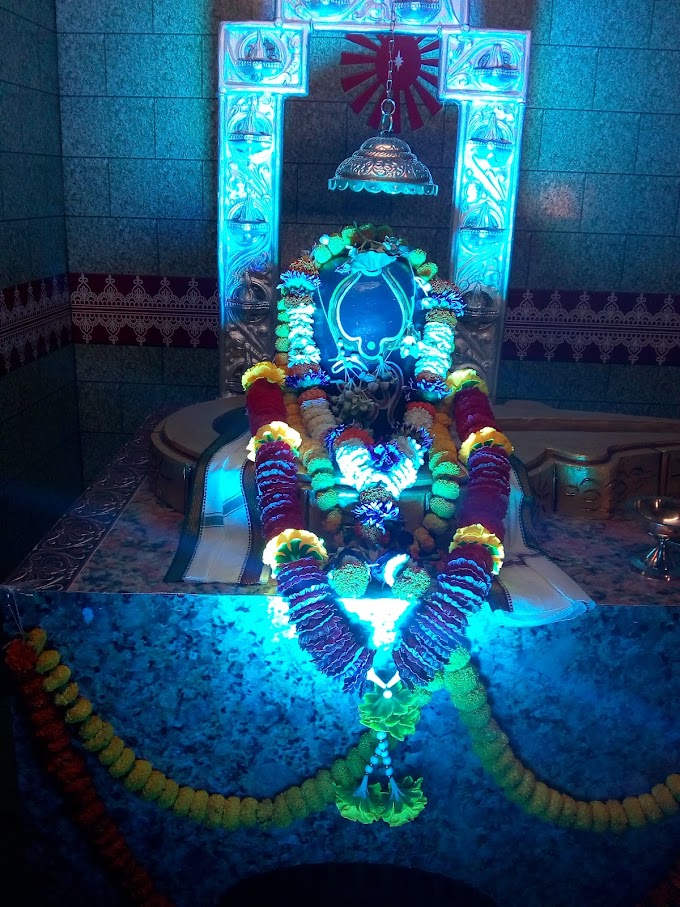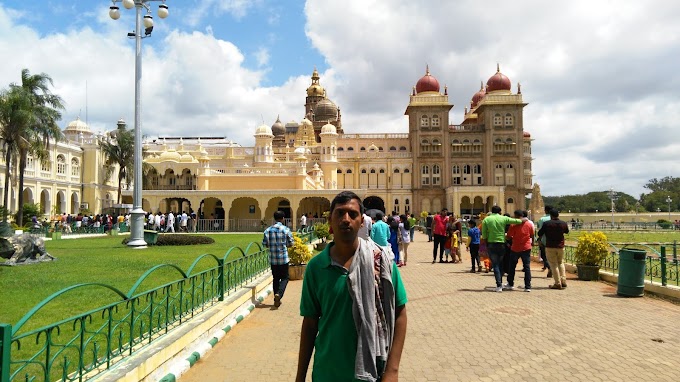VAISHNAVISM & SHAKTA SAMPRADAYA IN INDIAN
CULTURE
Vaishnavism is a community that considers Lord
Vishnu and his forms to be adorable. Under it, there are basically four
sects. According to the belief, these sects have been enforced by the
Vaishnava Mahamantra initiation tradition by various deities in the mythological
period. Presently, all these sects are known as their prominent
masters. All these prominent acharyas were born in South India.
Such as: -
1.
Sri Sampradaya, whose protagonist was
Vishnupatni Mahalakshmidevi and the chief Acharya Ramanujacharya. Which
is presently known as Ramanujasampradaya.
2.
Brahma
sect, whose main promoter was Chaturanan Brahmadeva and the chief Acharya
Madhwacharya. Which is presently known as Madhva Sampradaya.
3.
Rudra Sampradaya, whose main promoter was
Devadidev Mahadev and the leading Acharya Vallabhacharya, who is presently
known as Vallabha Sampradaya.
4.
The Kumar
sect, whose main promoter was Sanatkumar Gana and the leading Acharya
Nimbarkacharya, who is presently known as Nimbarka Sampradaya.
Also
in the medieval Uttarabharata under the Brahm (Madhva) sect, the
Brahmamadhvagoudeshwara (Gaudiya) sect, whose promoter was Acharya
Srimanahaprabhu Chaitanyadeva and the Ramanandi sect under Sri (Ramanuja) sect,
whose promoter was Acharya Sri Ramanandacharya. Ramandacharya ji, while
emphasizing the spirit of Sarva Dharma Sambhav, preached devotion to Kabir,
Rahim to all the people of varna (caste). Further in the Ramanand
Sampraday, Goswami Tulsidas composed Sri Ramcharitmanas and brought the
Bhagavata glory to the masses. His other compositions - Vinay Patrika,
Dohavali, Gitavali, Barwai Ramayana also produced an astrological treatise
Ramagya Questionnaire. Medieval Vaishnava masters opened the path for
devotion to all varnas and castes, but Ramanandacharya ran two different
traditions according to the varna system. Jai Hari is a prominent place of
devotion within Vaishnavism. The attitude of Vaishnavism was public and
widespread. According to the Gita, austerity and renunciation are not necessary
for attaining salvation. Man can attain salvation even while living in the
household.
SHAKTA SAMPRADAYA IN INDIAN CULTURE
Shakta Sampradaya is one of the three major
sects of Hinduism. The community that worships the Adi Shakti means
Goddess is called Shakta sect.
In this community, the Almighty is considered
as the goddess (not the man, the woman). There are beliefs of many
goddesses who are all different forms of the same goddess. Many
traditions are also found under Shakta faith, ranging from Lakshmi to the dreadful
Kali. Some Shakta sects relate their goddess to Shiva or Vishnu.
The Shruti and Smriti Granthas of Hindus appear
to form the main historical basis of the Shakta tradition. In addition,
the Shakta people have faith in the Devi Mahamatmya, Devi Bhagwat Purana and
Shakta Upanishads (eg, Devi Upanishad).
Shakta means 'worship of Goddess Shakti'.
Shakta Dharma is the science of cultivation of power. Its observant
Shakta religion is also considered as old as the ancient Vedic religion.
It is noteworthy that this religion developed along with Vedic religion or with
the need to incorporate it into Sanatana Dharma. It is a major form of
worship in Hinduism, now called 'Hinduism', it can be divided into three
interlinked, interconnected streams. Vaishnavism, worship of Lord
Vishnu; Shaivism, worship of Lord Shiva; And Shaktism, worship of
Shakti form of Goddess. Thus Shaktism is a common term in South Asia
designating various goddess traditions, with the common focus being the worship
of goddesses.
Shakti worship' Shakti's followers are often
called 'Shaktas'. The devotees not only worship Shakti, but also try to
enrich, control and transform its power-manifestation into the power or energy
of the human body and the living universe. Shakti, in particular, is
believed to be located in the form of Kundalini to the anal base of the human
body. This Kundalini Shakti can be awakened through complex meditation
and sexual-compound rituals. In this state, it rises upwards from the
spinal cord of the subtle body. Passing several chakras on the way, until
one enters the last chakra at the top of the head and there with joy in meeting
her husband-beloved Shiva. The mythological combination of Bhagwati and
God is experienced in a mono-physical form in the form of joyous-mystical
samadhi, whose blissful ecstasy is said to flow down the entire body as a flood
of ecstasy and gaiety deepens from the cranial region.
RECOGNITION
In the Shakta sect of Hindus, Bhagwati Durga is
considered to be the power and supreme deity of the world. This Purana is
actually famous for the description of 'Durga Charitra' and 'Durga
Saptashati'. That is why it is also called Purana of Shakta sect.
It is said in the scriptures - 'Matar: Sarvabhutanam Gaon:' That is, cow is the
mother of all beings. That is why even in Aryan culture, Shaiva, Shakta,
Vaishnavite, Gaanapatya, Jain, Buddhist, Sikh, etc., they all have respect for
cow even if there is a difference in the practices of worship and ritual in all
the sects. In many sects of Hinduism, various types of tilak, sandalwood,
turmeric and saffron are made using aromatic substances. Vaishnavites
decorate their head with circular point, Shakta Tilak and Shaiva Tripundra.
In the 'Dharma Granth' Shakta Sampradaya,
'Sridurga Bhagavata Purana' is a major book in relation to Goddess Durga, which
describes 108 Devi Peethas. Among them, 51-52 Shakti Peethas have a very
important place. There is also Durga Saptashati in this.
Shaktis believe that the supreme power of the
world is feminine. That is why they worship Goddess Durga as God.
In all the religions of the world, the imagery of God has been done like a
man. That is, God may be like a man, but Shakta Dharma is the only
religion in the world which considers the creator of creation as mother or
woman. In fact, this is the only religion of women. Shiva is a
corpse, power is the ultimate light. However, the number of Shakta
philosophy is the same.
There is evidence of 'ancientness' in the Indus
Valley Civilization as well as the worship of Mother Goddess. Shakta sect
is an ancient sect. In the Gupta period, it was popular in the countries
of north-eastern India, Cambodia, Java, Bornea and Malaya. After the
practice of Buddhism, its influence decreased.
REFLECTION
OF HINDU FAITH
Shaktism as a theoretical or popular religious
category is a reflection of the Hindu belief that innumerable goddesses of
rural and Sanskrit legends are manifestations of a Mahadevi. It is
generally believed that the concept of Mahadevi is ancient. But
historically, its calculation is probably of medieval period. When highly
heterogeneous local and all-India traditions were integrated into theoretically
integrated theology. Theology can be used in historically and
theoretically different traditions. From mythology of various goddesses
of medieval puranas to two major goddess branches or Shakta Tantrism clans,
past and present, virtually innumerable local rural goddesses.
POPULARITY
Historically, Shaktism has been popular in the
outskirts of South Asia. Especially in Kashmir, South India, Assam and
Bengal, although its tantric symbols and rituals have been ubiquitous in Hindu
traditions since at least the sixth century. Recently, with the
traditional Indian diaspora population, some Indo-academic communities, and
with various neo-age and feminist-oriented traditions, various forms of
traditional, philosophical and popular anarchism have generally entered the West
under the more popular title Tantrism or Tantra.
Shakta culture 'During the Krishna period, the
influence of Shakta culture in Braj greatly increased. Mahamaya,
Mahavidya, Karoli, Sancholi etc. are famous Shaktipeeths in Braj. King
Kansa of Mathura was killed by Vasudeva, the girl born to Yashoda, who is
worshiped as the presiding deity of Lord Krishna. This belief of Goddess
Shakti extends from Braj to Saurashtra. In Dwarka, the beautiful Sindri
idol statue on the summit of Lord Dwarkanath has been described as a sister of
Krishna, who sits on the summit and always protects her. Braj was the
main stronghold of the Tantrikas till 100 years ago. The tantriks here
are famous all over India. Kamavan was also the main center of tantra learning
at the time of King Kamsen, many tantrikas lived in his court. [1]
OBJECTIVE
Like all sects, salvation is also the aim of
the Sakta sect. Still accumulate power, worship power, power is life,
power is religion, power is truth, power is everywhere and power is required by
all. Be strong, be brave, be fearless, be independent and be
powerful. That is why the seekers of Nath and Shakta sect keep doing
various types of yoga and sadhana to become powerful. Achievements
continue. Salvation can be attained only by power. Siddha,
intelligence and prosperity have no meaning if there is no power.
Solar cults that worship the sun are called solar. This
community has existed since Vedic period. The worship of the Sun is
mentioned in the Varna system of Sanatana Dharma. Among the Brahmins, the
worship of the Sun is described in Sandhya Karma. "Solar"
considers the Sun as Brahma (the father of the world). The Vedas contain
the praises of the Sun, the main one of which is the "Chakshuso Upanishad".










